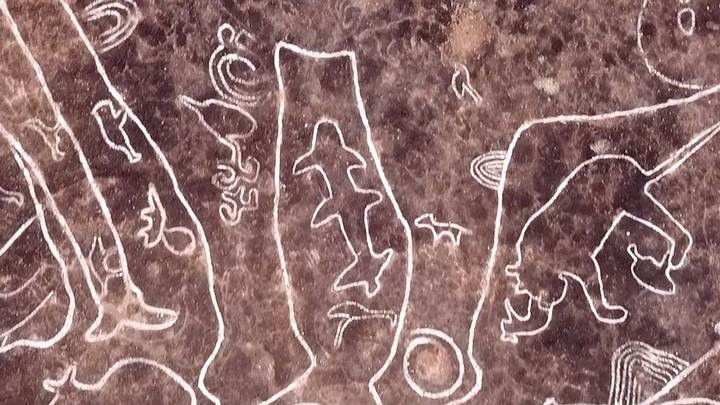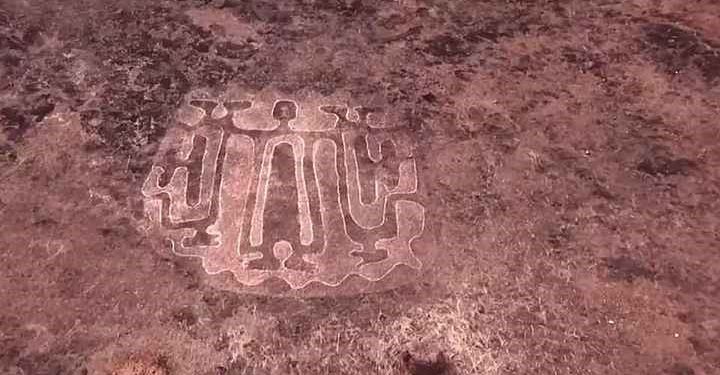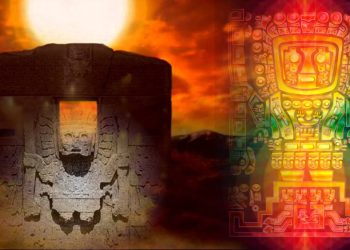This prehistoric rock art in India could point to a previously unknown civilization that existed thousands of years ago. Recently discovered petroglyphs show animals not native to the region, raising new questions about early human migration, memory, and the untold history of the Indian subcontinent.
A discovery hidden in plain sight
Deep in the rocky terrain of Maharashtra, India, researchers have uncovered something extraordinary: this prehistoric rock art in India may belong to a lost civilization unknown to history. Etched into ancient, flat hillsides and outcroppings, the petroglyphs—carvings in stone—depict a variety of animals, geometric shapes, and human figures that have remained hidden for thousands of years.
Archaeologists believe these petroglyphs could be among the oldest ever discovered in the region, possibly dating back to 10,000 BCE. Many of the carvings remained buried beneath the surface until a group of local explorers brought them to light.
Some of the images are now considered sacred by locals, while others were completely unknown to surrounding villages—underscoring how this prehistoric legacy quietly endured through generations without formal recognition.

Signs of a culture that defies expectations
What makes this prehistoric rock art in India so unusual is not just its age, but its content. While many carvings show animals native to the region—like deer, fish, and turtles—others depict animals that have never existed in India, including rhinoceroses and hippopotamuses.
That detail has stunned experts and raised difficult questions. Were these animals once native to the region? Or were the people who made these carvings migrants from a distant land—perhaps even Africa—bringing with them memories of fauna they once hunted?
“We have not found any images of agricultural activities,” said a spokesperson from the Maharashtra archaeology department. “But the drawings show animals that were hunted, and there are details of other forms of animals.” This suggests that the creators of the petroglyphs belonged to a hunter-gatherer community, one that likely existed before agriculture took root in the Indian subcontinent.
Tejas Garge, director of the state archaeology department, told the BBC: “Our first deduction from examining these petroglyphs is that they were created around 10,000 BC.”
An effort led by local explorers
The rediscovery of the petroglyphs began with two explorers—Sudhir Risbood and Manoj Marathe—who initially stumbled upon a few carvings in the region. Their curiosity led to a large-scale effort to identify more. They began walking from village to village, asking elders and children to share anything they knew about strange images on rocks.
“We walked thousands of kilometers,” said Risbood. “People started sending photographs to us, and we even enlisted schools in our efforts to find them. We made students ask their grandparents and other village elders if they knew about any other engravings. This provided us with a lot of valuable information.”
Eventually, they documented petroglyphs in 52 villages—yet only five of those villages were even aware that the rock art existed.
The team also played a crucial role in getting the government involved, pushing for the preservation and study of the site. Their grassroots approach proved vital in uncovering and protecting what may be one of the most important prehistoric discoveries in India’s recent archaeological history.
Rewriting the prehistory of the subcontinent
This prehistoric rock art in India challenges long-held assumptions about the region’s early human history. The presence of non-native animals, the absence of farming scenes, and the artistic techniques suggest that the people who created these carvings may have lived at a time when much of India’s early cultural evolution was still undocumented.
If the animals depicted in the carvings were once native to the region, it could dramatically shift our understanding of climate and biodiversity in prehistoric India. If, on the other hand, the animals were remembered or imagined by a migrating population, then the petroglyphs represent one of the earliest known expressions of cultural memory and storytelling through imagery. Either way, these carvings are more than just ancient art—they are pieces of a forgotten narrative, left behind by a people whose world we are only just beginning to rediscover.











